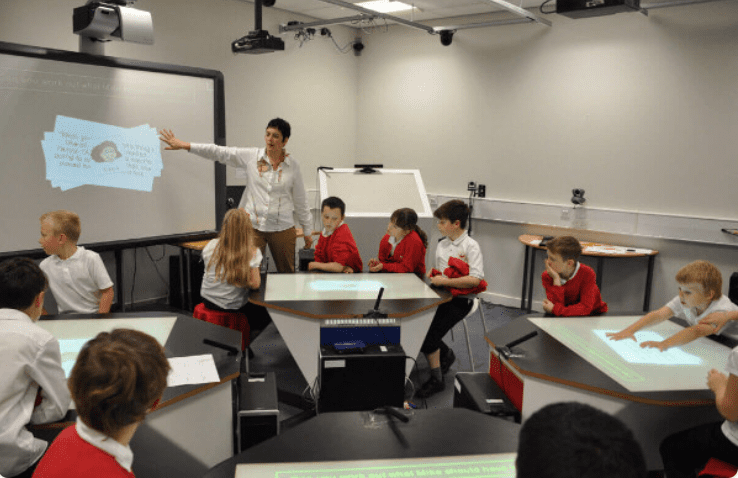It’s no secret that technology has infiltrated every aspect of our lives. And education is no different. In fact, technology has been used in education for centuries. But what are some of the most popular 21st-century technologies used to enhance education today?
Below are five technologies that are commonly used in schools today. Keep in mind that this is not an exhaustive list, but it will give you a good idea of some of the most popular technologies being used in education today.
Using Social Media for Education
Not too long ago, people would never have thought that social media could be used for anything other than staying connected with friends and family. But today, educators are using social media to enhance the learning experience for students.
For example, some teachers are using social media platforms like Twitter and Instagram to post challenges and assignments for their students. This helps keep them engaged and accountable, and it also teaches them how to use these platforms responsibly.
Other educators are using social media to create virtual classrooms. This allows students to connect with teachers and other students from around the world, and it also gives them the opportunity to learn in a more interactive and engaging way.
Utilizing Digital Note-Taking Tools
As a student, you’re probably used to taking notes on paper. But have you ever tried using digital note-taking tools?
There are a number of benefits to using tools like these. For one, they allow you to type up your notes more quickly and easily. You can also add multimedia elements, like videos and images, which can make your notes more interesting and engaging. And if you need to share your notes with someone else, you can do so with just a few clicks.
Best of all, many of these tools are free to use. So why not give them a try?
Augmented Reality for Learning
Augmented Reality (AR) is an innovative technology that has been used to enhance learning in the 21st century. It is a computer-generated simulation of a physical environment that can be experienced and navigated through on a mobile device, tablet or PC. With this technology, students can interact with virtual objects in their physical surroundings.
AR has the potential to completely transform the way students experience their classroom environment. For example, they could lay out 3D models of organisms or molecules in the classroom and interact with them as if they’re actually there. Or they could explore an ancient civilization and see it come alive through AR content. The possibilities are truly limitless!
AR also encourages collaboration among students, allowing them to work together on activities such as creating models, developing stories around digital artifacts, or engaging in other interactive projects. Studies have shown that AR can help improve student engagement and performance as well as positively influence learning outcomes and foster greater student participation.
Virtual Reality in Education
Have you ever wondered how virtual reality is being used to enhance education today? The truth is, virtual reality has come a long way and is now being used in classrooms around the world.
Virtual reality in education can help students engage with difficult topics in a more interactive way. For example, virtual field trips are a great way for students to explore places they can’t physically go or study objects that are too large or expensive to bring into the classroom. In addition, teachers can use VR to create immersive simulations to teach practical skills.
But that’s not all—VR is also being used by educators as an assessment tool. Educators can measure how well their students are grasping material by placing them in simulated situations and evaluating their performance. This helps teachers get an accurate picture of how the student understands the concepts they are teaching.
The Benefits of Online Independent Schools
Have you considered taking classes with an independent online school? Technology has made it possible to attend school virtually and you can actually progress faster than in a traditional classroom.
Online schools offer more flexible schedules, which gives students the freedom to structure their own timetable and learn at their own pace. Plus, the convenience of being able to learn from any location is a definite plus – that means no more long and tiring commutes.
Independent online schools also tend to offer multiple ways for students to interact with teachers, from video calls to instant messages. This ensures that there is a constant connection between teacher and student, so help is always just a click away.
Overall, online independent schools have many benefits over traditional brick-and-mortar colleges. So if you’re looking for an alternative way to get an education, then this may be the route for you.
Conclusion
So, what kind of 21st-century tech is used to enhance education today? Quite a range of things, as it turns out.
Some of the most common tools used in classrooms today are tablets and laptops. They can be used for a variety of purposes, such as taking notes, accessing the internet, and completing assignments. In addition, teachers can use software that allows them to monitor student progress and give them feedback.
Other technologies that are often used in education include 3D printers, robots, and VR headsets. These tools can be used to create a variety of learning experiences for students. For example, 3D printers can be used to create models of historical landmarks, and VR headsets can be used to simulate real-world situations.
As you can see, there are many different technologies that can be used to enhance education. It’s important to choose the tools that are best suited for each classroom and each individual student.



































